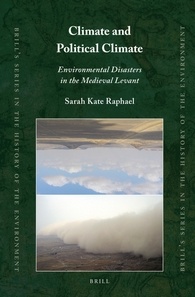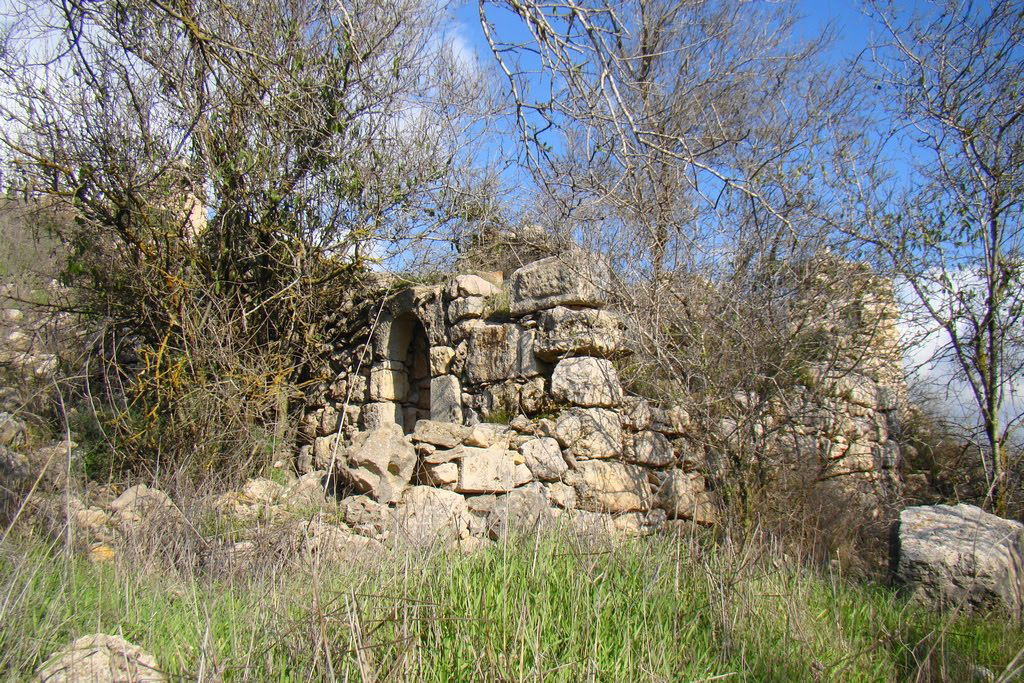BOOK REVIEW: In Climate and Political Climate, Sarah Kate Raphael explores the interplay between the general climatic shift in Medieval Levants, the impact of singular devastating environmental events and the warring, raiding and diplomatic squabbling between Crusaders and Saracens
 Climate and Political Climate. Environmental Disasters in the Medieval Levant
Climate and Political Climate. Environmental Disasters in the Medieval Levant
By Sarah Kate Raphael
Series: Brill’s Series in the History of the Environment
Brill 2013
ISBN13: 9789004216563
E-ISBN: 9789004244733
The twelfth and thirteenth centuries in the Levant saw a substantial rise in the number of droughts. This coincided with some of the most violent tectonic activity the region had witnessed. Nature, however, could conjure other powerful disasters: swarms of locusts, armies of mice, scorching winds and thick dust storms.
The data for this research is drawn from contemporary Arabic and Latin sources. The main aim is to try and determine the long and short-term repercussions of environmental disasters on the political, military and social affairs in the Levant during the Crusader, Ayyubid and Mamluk periods. Did environmental disasters spur or hinder conflict?
The answer is perhaps not that easy. Conflict took many forms from major warfare to occasional raiding and diplomatic bickering. All-in-all, though, we learn that an army walks on a full belly and environmental disasters did play a role in a wider perspective. Occasionally the Crusaders and the Arab forces would cease hostilities, while trying to overcome the very hostile environment, they ended up operating in. However, when granary stores were once again filled, it seems they would take up arms once more. The political leaders seemingly used all possibilities to deal with the challenges: raids and counter raids, as well as truce and short-term peace treaties. It appears that the real confluence between climatic events and politics were on a more structural and long-term historical level.
However, before we get to this conclusion, the book offers us so much more: detailed descriptions of the climatic challenge in the region, the organisation of agricultural production of both sedentary and nomadic people, the strategies involved in preparing for droughts and famines, the changes of the weather in the 14th century and the impact of earthquakes. Finally we get an vivid description of the curse inflicted by insects, locusts, rodents and other horrors.
In the end, it appears that the Saracens were simply in a better position because they were able to draw on resources from Egypt when droughts hit the Levant. Problematic for the region as a whole were the times when drought struck both Egypt and Syria simultaneously, but because the climatic pattern that affect Syria and the Nile come from two very different systems causing drought in Syria and abundant agricultural output in Egypt. This happened in 1178-79, 1263, 1294-95 and 1304. In this game, the Crusaders and Christian settlers were dependent on support from their European home-countries and the papal State and grain became the most valuable import. However, during the period in question other forms of crusading caught the imagination: The Albigensian, the Prussian and the Finnish expeditions. To this should, of course, also be added the Reconquista in Iberia. Glamorous Crusades to the Holy Land were planned and carried out in the 13th century, but with no real success; at the same time, ships with material support in the form of grain and other victuals became fewer and more far apart. Did climate play a role in this? Probably! At this time the traditional crusader nations in Europe – England and France – were busy trying to make up for the climatic deterioration, which took its toll on their home-turf after 1260. Thus, this research examines the most destructive disasters and gradual climate changes within a broader historical context.
This is a very fine book, which explores in fascinating details the ins and outs of the very precarious living circumstances, which were the rule.
Heartily recommended!
Karen Schousboe
Sarah Kate Raphael has two PhD’s under her hat: one in Archaeology and another in Medieval History. The present book is based on her dissertation written as a postdoc Herrmann Institute of Earth Sciences, Hebrew University. She is currently working as an independent scholar.
FEATURED PHOTO:
Ruin of Belmont Castle in Israel. Source: Panoramio
